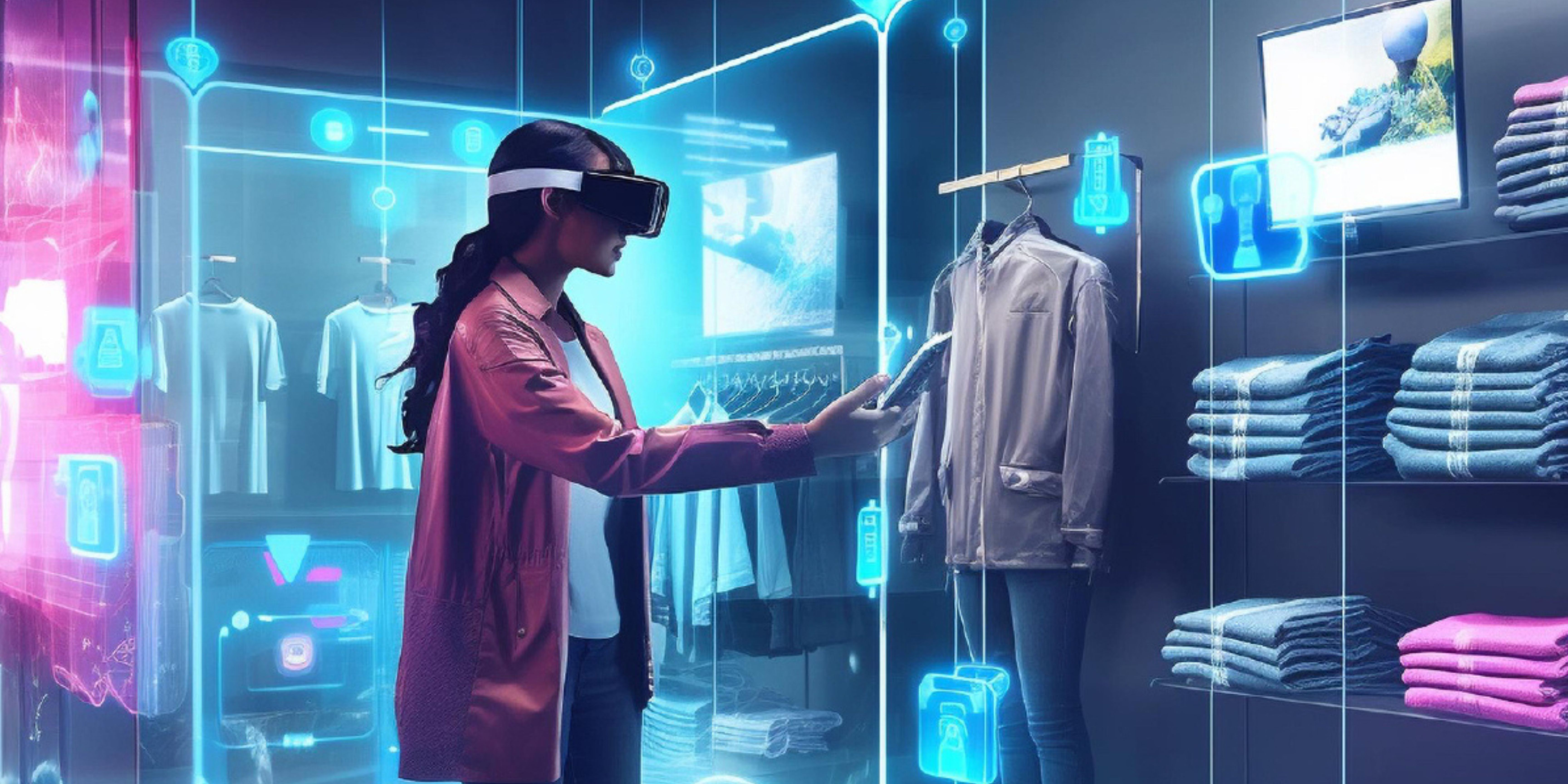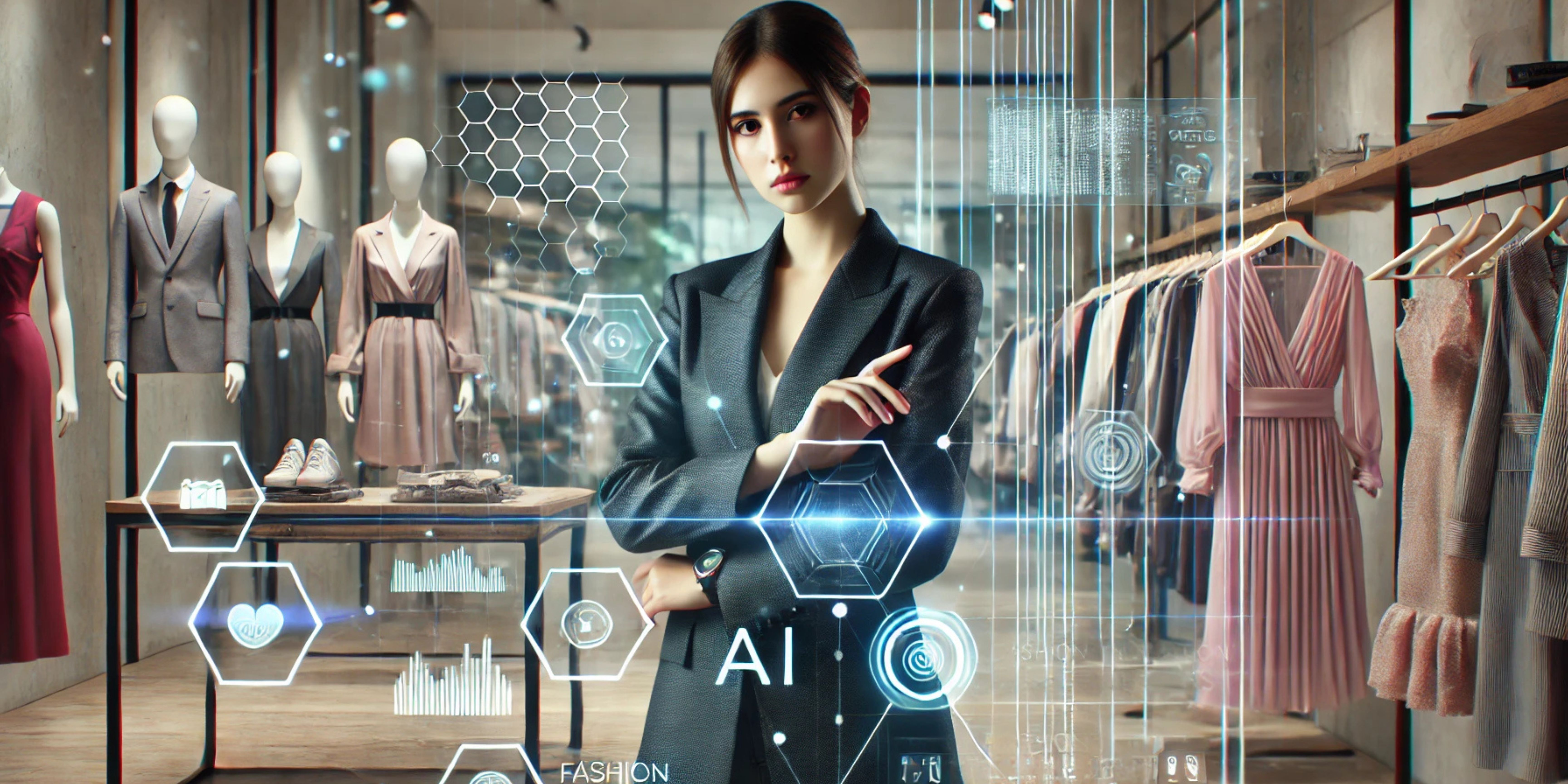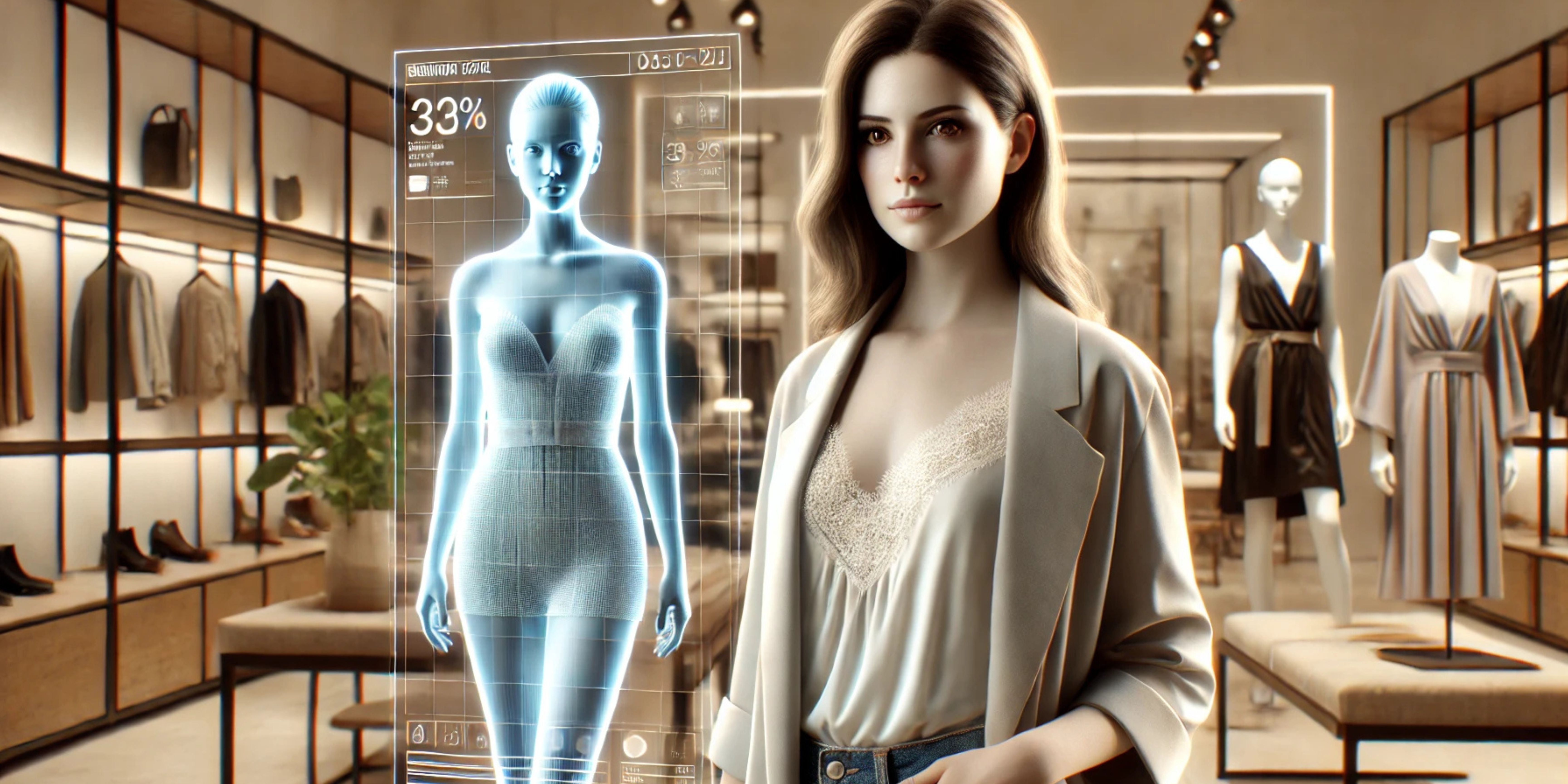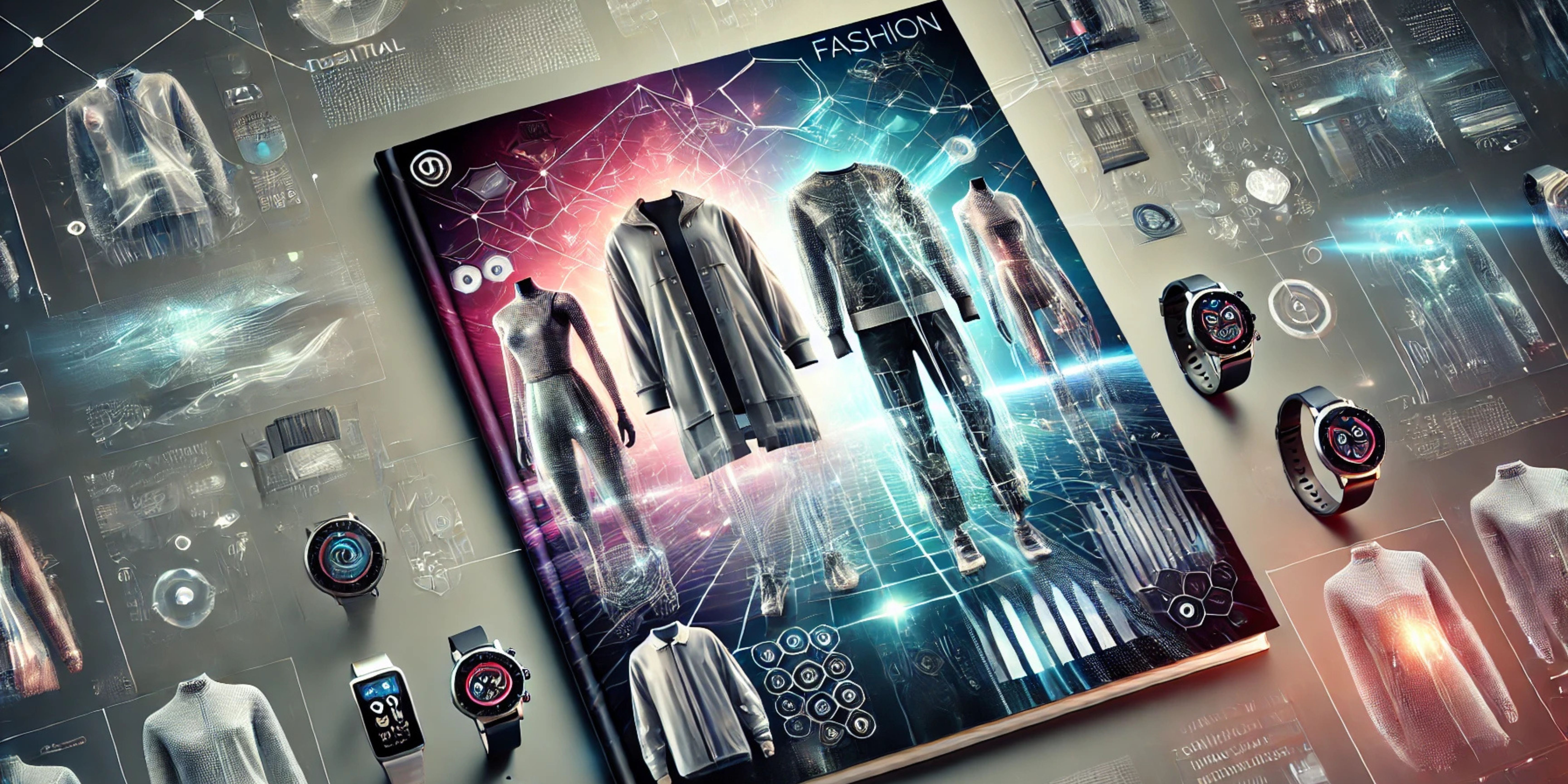
Fashion Meets Technology: How Digital Fashion is Transforming the Future of Fashion Experience
Explore how Digital Fashion, Wearable Technology, and Augmented Reality (AR) in Fashion are transforming the industry. From 3D Design & CGI in Fashion to Virtual Try-On Technology and Sustainability in Digital Fashion, see how Gaming and Fashion are shaping the future.
Nov 4, 2024

Share this Article
The fashion industry is entering an era where the physical and digital worlds are no longer separate entities but are intertwined. Instead of replacing traditional craftsmanship with technology, fashion is evolving to blend these two aspects harmoniously. Digital Fashion and AI-driven solutions have opened new avenues for brands to connect with consumers and express their creativity. The physical limitations of fashion, like fabric and textile, are now being enhanced by 3D Design & CGI in Fashion, allowing for limitless possibilities in design and production.
Today, Gen Z and Gen Alpha are leading the way in redefining fashion. For these younger generations, fashion is not just about what they wear in the real world but also how they present themselves in digital spaces. The lines between physical and digital are blurring, and consumers expect seamless integration of both realms. Whether it’s Virtual Try-On Technology, digital avatars, or smart fashion accessories like Wearable Technology such as Apple AirPods, these new status symbols reflect a cultural shift in how people view and engage with fashion.
Fashion brands need to adapt to this hybrid world by embracing both digital and physical elements. The industry is witnessing a transformation where traditional fashion houses are integrating AI, Augmented Reality (AR) in Fashion, and virtual experiences into their offerings. Brands that leverage these tools to create hybrid experiences will not only appeal to the digital-first consumer but also preserve the essence of fashion craftsmanship. This shift represents a new frontier for fashion, where Digital Fashion and physical design coexist in harmony.
The Digital-Physical Blend: Redefining Fashion
The merging of Digital Fashion and physical fashion is reshaping the industry’s landscape. Consumers now expect fashion to exist in both realms, and fashion brands are adapting to meet those expectations. In the past, fashion was seen as something exclusively physical, but with the rise of Virtual Try-On Technology, avatars, and Augmented Reality (AR) in Fashion, consumers are now equally excited about their digital personas. These changes are creating new opportunities for brands to engage with consumers in innovative and creative ways.
Nowadays millennials are transforming the fashion industry through their expectations for innovation and sustainability. This generation grew up during the rise of digital technology, making them highly receptive to brands that blend fashion with tech-driven experiences like Augmented Reality (AR) try-ons and wearable technology. They want convenience, personalization, and the ability to engage with fashion in digital and physical realms seamlessly.
As digital-first consumers, millennials are embracing Digital Fashion and actively engaging with platforms that offer virtual fashion experiences and sustainability in production. This shift is pushing fashion brands to innovate with AI-driven personalization, AR, and eco-friendly practices. For millennials, fashion isn't just about aesthetics—it's about aligning with brands that reflect their values, including a commitment to sustainability.
Fashion brands integrating technology and sustainable practices are winning millennial loyalty. They seek transparency in fashion production and are drawn to companies that offer sustainable solutions without sacrificing style or functionality.
Besides, Gen Z and Gen Alpha are driving the demand for Digital Fashion. These generations, raised in a world of social media and online interactions, value Digital Fashion as a way to express their identities in the virtual realm. Virtual clothing and AR filters have become an extension of self-expression, allowing consumers to experiment with styles without committing to physical purchases. As a result, Digital Fashion is no longer a novelty but a central part of the fashion ecosystem.
The integration of digital technology into physical fashion is also leading to greater Sustainability in Digital Fashion. By offering digital alternatives, brands can reduce waste and environmental impact. Digital Fashion enables consumers to explore new trends without the need for physical production, which aligns with the growing demand for sustainable solutions in the industry. This blend of digital and physical fashion is not just about convenience or novelty—it’s about creating a more sustainable, efficient, and expressive future for fashion.
In today’s landscape of fashion, ensuring your products are easily discoverable is more important than ever. Shaku’s Automated Tagging System uses AI to categorize clothing by style, color, and fit, making it easier for customers to find what they’re looking for, boosting both visibility and sales.
Digital Fashion: A New Kind of Self-Expression
Digital Fashion is reshaping how people express themselves, offering endless possibilities in the virtual space. Brands like The Fabricant and DRESSX are pioneers in this space, creating digital-only collections that can be worn by avatars, used in Gaming and Fashion environments, or posted on social media. These garments don’t exist in the physical world but are just as valuable to consumers who view fashion as a form of digital identity. For the fashion industry, this opens up new revenue streams and opportunities for creativity without the limitations of physical production.
This shift toward Digital Fashion is also redefining how fashion interacts with Sustainability in Digital Fashion. Unlike traditional garments, Digital Fashion doesn’t require physical resources, meaning no textiles, dyes, or water are involved. As consumers become more eco-conscious, Digital Fashion offers a guilt-free way to explore styles and trends. The potential for sustainable fashion lies in offering both digital and physical alternatives, allowing consumers to balance their desire for new looks with a responsibility toward the planet.
With all the above, Digital Fashion is not just about sustainability—it’s also a powerful tool for innovation, breaking traditional boundaries in design and production. Designers are now free to explore avant-garde concepts that would be difficult, if not impossible, to achieve in the physical world. For instance, brands like The Fabricant have created entirely digital-only collections, where garments are made of light, smoke, and water, challenging the very definition of what fashion can be. These digital pieces push creative boundaries, as they are not constrained by gravity, fabric availability, or conventional production techniques.
In the gaming world, Balenciaga collaborated with Fortnite to offer high-fashion skins, allowing players to dress their avatars in virtual Balenciaga garments. This not only showcases how Digital Fashion enters new markets but also highlights how fashion and gaming cultures are merging, offering consumers unique ways to express their style digitally.
On the other hand, AR filters used in platforms like Instagram or Snapchat allow users to try on virtual clothes, helping brands engage with tech-savvy consumers. These immersive experiences help consumers visualize and experience fashion in ways physical stores can’t replicate.
In the concept of digital fashion, designers can even create clothing that changes appearance based on the viewer’s interaction—something Rtfkt Studios is pioneering in the world of virtual sneakers. This is allowing brands to reimagine what clothing can be in the digital space, providing consumers with a dynamic, interactive, and highly personalized form of self-expression that reflects their digital lifestyles.
As the fashion industry embraces Digital Fashion and virtual try-ons, having accurate body measurements is essential to ensuring a seamless shopping experience. Shaku’s Body Measurement Technology enables your brand to offer perfectly fitted garments every time, reducing returns and elevating customer satisfaction by bridging the gap between physical and digital fashion.
AI-Powered Personalization: A New Era for Fashion Retail
One of the most exciting advancements in fashion today is the use of AI-powered personalization. Through advanced algorithms and data analysis, AI is helping brands deliver a tailored shopping experience for every customer. With tools like AI-driven body measurement, consumers can enjoy perfectly fitted garments without stepping into a store. This technology not only ensures the right size on the first try but also minimizes the need for returns, improving both customer satisfaction and Sustainability in Digital Fashion.
Beyond sizing, AI-powered tagging systems are revolutionizing how consumers search for and discover products. With AI, brands can automatically categorize clothing items based on style, color, and fit, making it easier for shoppers to find exactly what they want. The result is a more streamlined, intuitive shopping experience that keeps customers engaged and satisfied. By integrating AI technology, fashion retailers are transforming how consumers interact with their brands.
3D Design & CGI in Fashion is also one of the most transformative tools in this space. Through computer-generated imagery and 3D modeling, designers are now able to visualize and create virtual garments before a single piece of fabric is cut. This method not only enhances creativity but also drastically reduces the environmental impact by minimizing waste in the production process. 3D Design & CGI in Fashion allows for experimentation and innovation, ushering in a more sustainable and efficient future for fashion.
For the future of fashion retail, AI represents a critical tool for driving both efficiency and customer loyalty. As personalization becomes a key differentiator in the market, brands that leverage AI will be able to offer bespoke experiences that meet the unique needs of each consumer. The power of AI lies in its ability to analyze vast amounts of data, allowing brands to anticipate trends, optimize inventory, and enhance the overall customer journey. In this new era of AI-powered fashion, brands are better equipped than ever to provide customers with the personalized experiences they crave.
Wearable Technology: Fashion’s Next Frontier
As Wearable Technology evolves, it’s becoming a defining feature of modern fashion. Devices like smartwatches, smart glasses, and fitness trackers are no longer viewed as purely functional; they are now considered fashion statements. For younger generations, these devices have become status symbols, reflecting their tech-forward lifestyles and offering a blend of style and utility. Wearable Technology is where fashion meets functionality, and this intersection is creating new opportunities for brands to innovate.
One of the biggest advantages of Wearable Technology is its ability to enhance the user’s experience beyond traditional fashion. Smartwatches track fitness, provide notifications, and offer health insights, all while maintaining a sleek, fashionable design. Similarly, smart glasses, like Ray-Ban’s Meta glasses, combine cutting-edge tech with style, allowing users to stay connected while making a fashion statement. These innovations are driving demand for fashion that does more than just look good—it needs to be functional too.
Fashion brands are increasingly integrating Wearable Technology into their collections to meet this demand. As consumers seek products that balance aesthetics with functionality, brands must embrace this trend to stay relevant. The future of fashion is not just about fabric and design; it’s about how technology can enhance our daily lives through what we wear. Wearable Technology represents the next frontier in fashion, blending digital innovation with personal style in ways that resonate with today’s tech-savvy consumers.
Shaku’s Visual Clothes Search service offers a revolutionary way for fashion brands to enhance customer engagement. By allowing users to upload images of clothing, our AI-powered visual search technology quickly analyzes patterns, colors, and styles to find matching or similar products in your brand’s inventory. This creates a fast, seamless shopping experience where customers can discover the exact items they’re looking for, driving satisfaction and boosting sales. So don’t hesitate and boost customer engagement with Shaku’s Visual Clothes Search service today!
AR and the Metaverse: The Future of Fashion Experiences
The rise of Augmented Reality (AR) in fashion and the metaverse is revolutionizing the fashion experience. Through AR-powered Virtual Try-On Technology, consumers can now see how a garment will look on them without visiting a physical store. This technology is enhancing the convenience of online shopping by giving customers a more realistic sense of how products will fit and look. AR is no longer a novelty—it’s becoming a key tool for fashion brands looking to bridge the gap between digital and physical retail.
In addition to AR, the metaverse is creating entirely new spaces for fashion to thrive. Platforms like Fortnite, Roblox, and Decentraland allow consumers to purchase and wear Digital Fashion for their avatars. These platforms provide fashion brands new opportunities for engagement, where players spend real money on virtual clothing. The metaverse is becoming a significant part of the fashion economy, opening endless possibilities for consumer interaction.
Social Shopping and Collaboration are also on the rise in the metaverse. Consumers can now attend virtual fashion shows with friends, try on clothes together digitally, and even collaborate with influencers or digital artists for exclusive virtual collections. These collaborative experiences are fostering stronger brand loyalty and community engagement.
On the other hand, fashion brands are tapping into NFTs (Non-Fungible Tokens), offering consumers exclusive ownership of digital fashion items. Major brands like Gucci and Dolce & Gabbana have already ventured into selling NFTs, creating entirely new revenue streams through limited-edition digital garments.
AR and the metaverse aren’t limited to online shopping—they’re enhancing omnichannel retail as well. In physical stores, customers can scan QR codes on garments and use AR to see alternate styling options, different colors, and even virtual customization, blending online and offline experiences seamlessly.
These technologies also support sustainability. AR try-ons and digital fashion reduce the need for physical samples, lowering fashion waste and carbon emissions from returns. By allowing consumers to virtually try on clothes before purchasing, brands can decrease the likelihood of returns, contributing to more sustainable fashion practices.
FAQs about How Digital Fashion is Transforming the Future of Fashion Experience
- What is Digital Fashion, and how does it impact the fashion industry? Digital Fashion refers to clothing designed and sold for use in virtual environments. It allows for limitless creativity, reduces physical waste, and meets the needs of tech-savvy consumers.
- How is Augmented Reality (AR) in Fashion transforming shopping experiences? Augmented Reality (AR) in Fashion enables virtual try-ons, giving consumers a realistic sense of how products fit, enhancing the convenience of online shopping.
- How does Wearable Technology enhance fashion functionality? Wearable Technology blends fashion with functionality, offering smart devices like watches and glasses that provide health insights while serving as style statements.
- What role does Sustainability in Digital Fashion play? Sustainability in Digital Fashion reduces waste by eliminating the need for physical production and offering eco-friendly alternatives to traditional garments.